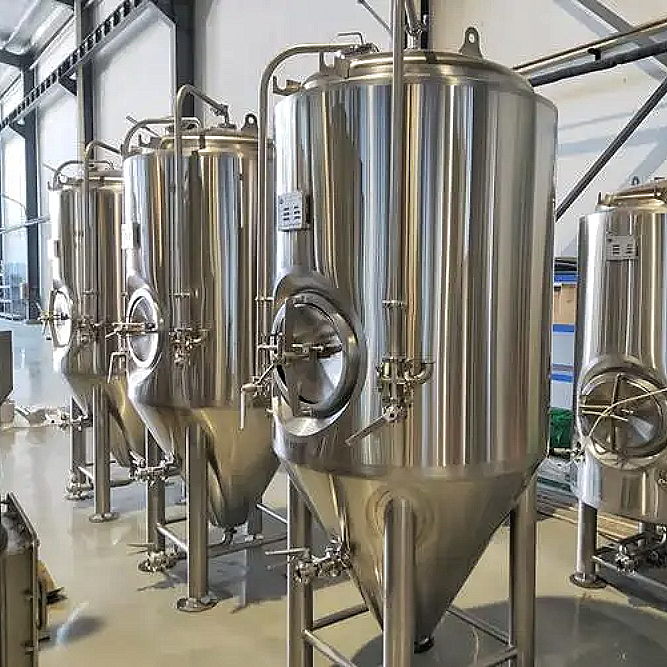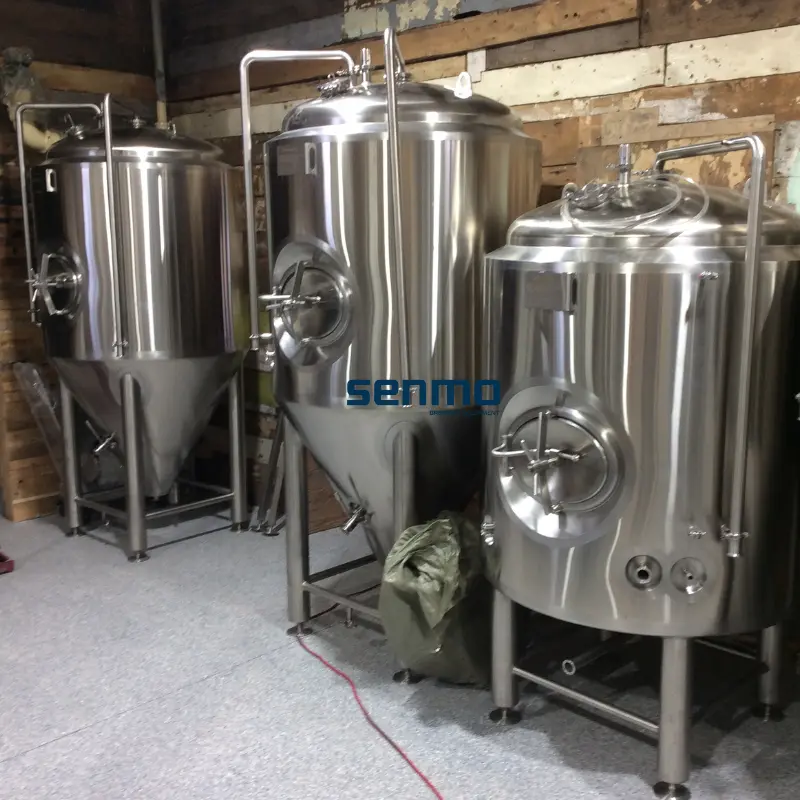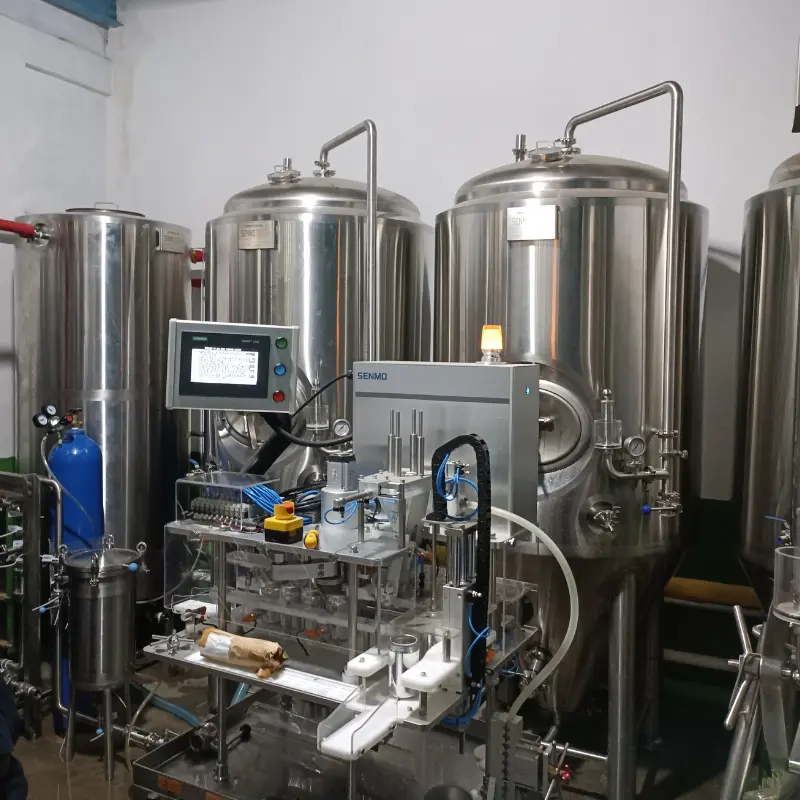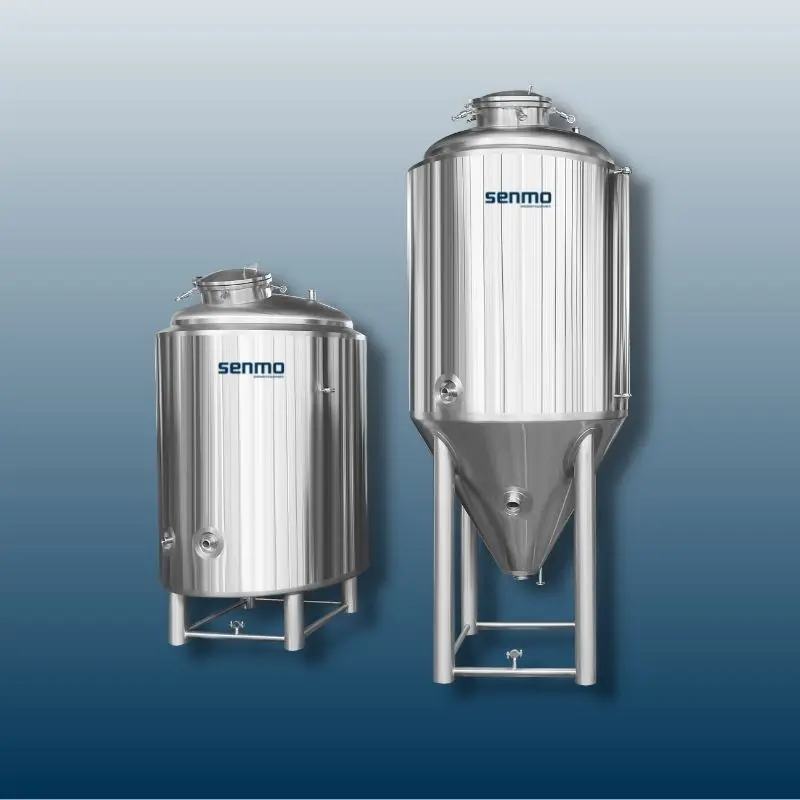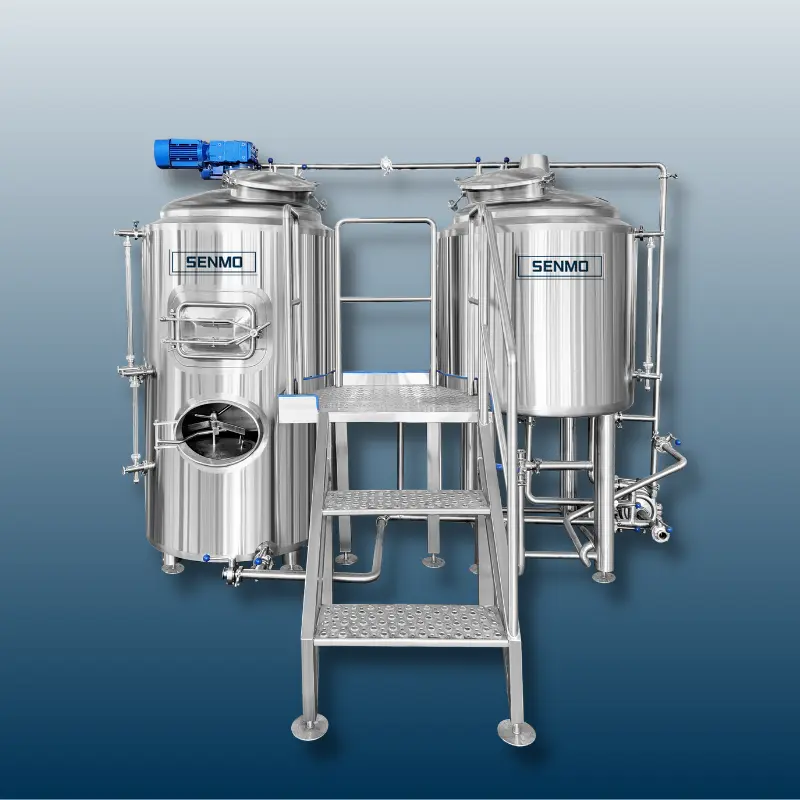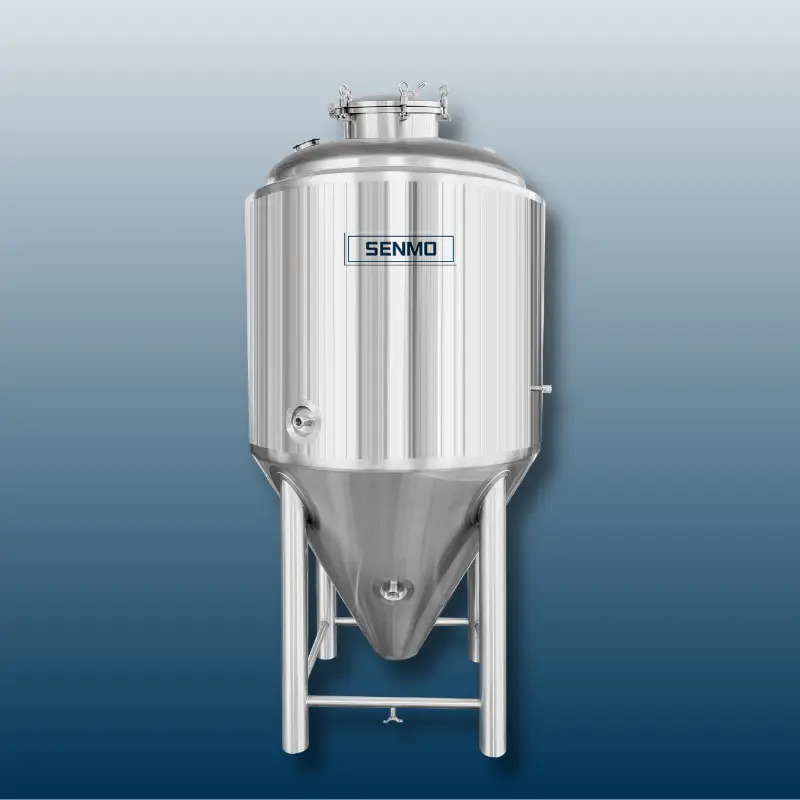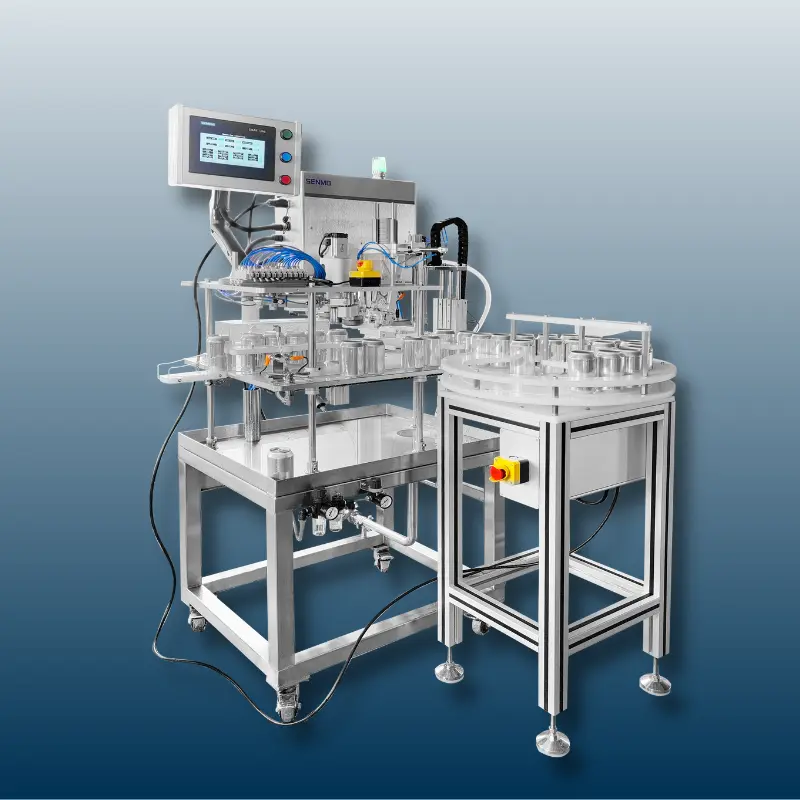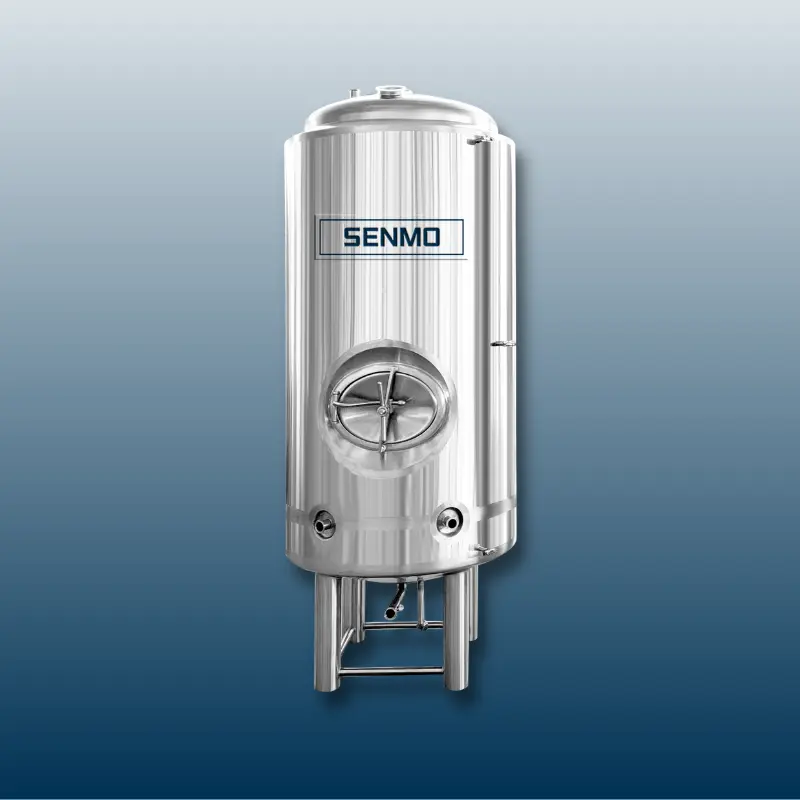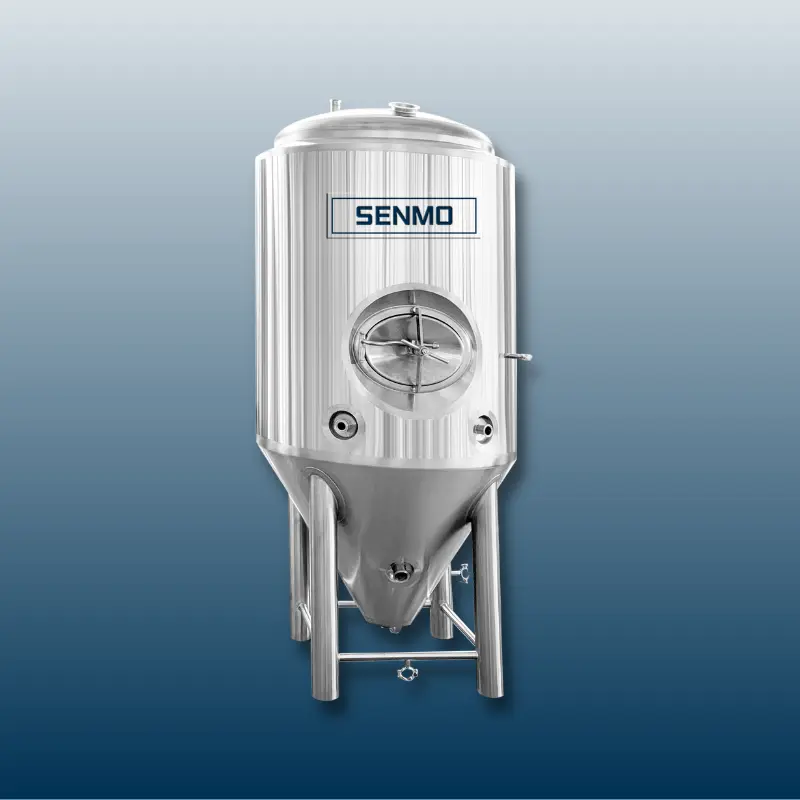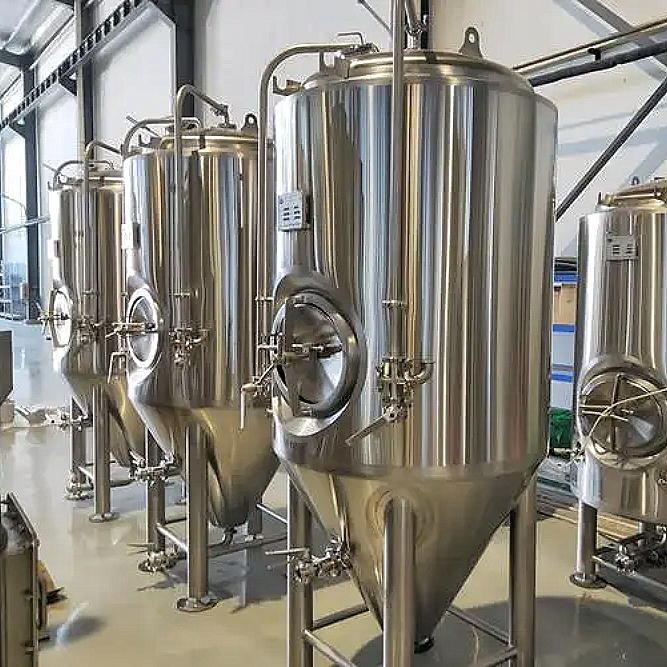
What is stainless steel conical fermenter for beer?
A stainless steel conical fermenter is a specialized vessel used in the beer brewing process to ferment and condition beer. It is a type of fermentation vessel that is designed with a conical shape, resembling an upside-down cone. The fermenter is typically made of high-quality stainless steel, which offers several advantages for the brewing process.
The main features and functions of a stainless steel conical fermenter for beer include:
Fermentation: The primary purpose of the conical fermenter is to facilitate the fermentation process. After the initial brewing stage, where the wort (unfermented beer) is created, it needs to be fermented by yeast to convert sugars into alcohol and carbon dioxide.
Shape: The conical shape of the fermenter is beneficial for the brewing process. The cone at the bottom allows the yeast and other sediment to settle and collect at the point, making it easier to separate the clear beer from the sediment during the conditioning and bottling stages.
Temperature Control: Stainless steel is an excellent conductor of heat, allowing for better temperature control during fermentation. Some stainless steel conical fermenters come with temperature control features, such as built-in cooling jackets, which enable precise temperature regulation during the fermentation process.
Sanitary and Durable: Stainless steel is a hygienic material that is easy to clean and sanitize, making it ideal for brewing environments where cleanliness is crucial. Additionally, stainless steel is durable and long-lasting, providing a reliable vessel for multiple brewing cycles.
Airtight Seal: The fermenter is equipped with airtight seals, such as gaskets and valves, to prevent oxygen from entering the vessel during fermentation. Oxygen exposure can negatively impact the quality and flavor of the beer.
Yeast Harvesting: The conical shape of the fermenter allows for easy yeast harvesting. Brewers can collect and reuse the yeast that settles at the bottom of the cone for future batches, reducing the need to purchase new yeast each time.
Trub Collection: Trub, which is the leftover hops and other solids from the brewing process, settles at the bottom of the conical fermenter. The shape of the vessel makes it convenient to remove the trub and avoid its transfer to the finished beer.
Stainless steel conical fermenters are favored by both homebrewers and commercial breweries due to their efficient design, temperature control capabilities, and ease of use. They play a vital role in ensuring the quality and consistency of the beer during the fermentation and conditioning stages, ultimately contributing to the production of high-quality brews.
Fermenter specifications
Stainless steel conical fermenters required by different customers and brands may provide different specifications and size options to meet different winemaking needs and capacity requirements. We are a beer brewing equipment manufacturer from China. We can customize beer conical fermenters of different sizes and specifications. You can provide the specifications you want, and we will help you achieve it. Generally, we will provide the following stainless steel conical fermenter specifications:
Capacity: Stainless steel conical fermenters can range in capacity from a few liters to hundreds of liters and are suitable for home brewing, small bars, and large-scale commercial brewing facilities. Common capacities are 5 liters, 10 liters, 30 liters, 60 liters, 100 liters, 200 liters, etc.
Size: Tank sizes vary depending on capacity, from smaller table-top units to large stand-up units.
Material: In general, stainless steel conical fermenters are made of high-quality stainless steel, usually 304 or 316 stainless steel, which has good corrosion resistance and is easy to clean and maintain.
Temperature control: Some tank models may be equipped with cooling jackets to facilitate temperature control during fermentation through external cooling devices.
Accessories: Stainless steel conical fermenters are usually equipped with a series of accessories, such as air valves, sampling valves, bottom valves, pressure gauges, etc., which can provide better control and operation functions.
Pressure rating: Some tanks can withstand higher internal pressure, which is suitable for some special brewing processes.
Mobility: Some stainless steel conical fermenters are equipped with wheels for easy movement in the winery.
It should be noted that specific specifications and options will vary according to different manufacturers and brands. When choosing a stainless steel conical fermenter that suits your needs, it is best to choose according to your winemaking scale and process requirements, and ensure that you choose high-quality products to ensure the success of brewing and the quality of wine.
How to use
Using a stainless steel conical fermenter for beer is a straightforward process, but it requires attention to detail and adherence to proper sanitation practices to ensure a successful fermentation and the production of high-quality beer. Here's a general guide on how to use a stainless steel conical fermenter for beer:
Sanitize the fermenter: Before starting the brewing process, ensure that the fermenter is thoroughly cleaned and sanitized. Use a suitable brewing sanitizer and follow the manufacturer's instructions to ensure all surfaces are germ-free.
Prepare the wort: Brew your beer following your chosen recipe, which involves boiling the malt extract, hops, and other ingredients to create the wort (unfermented beer).
Cool the wort: After boiling, rapidly cool the wort to the appropriate fermentation temperature, usually around room temperature or slightly lower.
Transfer the wort to the fermenter: Use a sanitized siphon or a pump to transfer the cooled wort into the stainless steel conical fermenter.
Pitch the yeast: Add the yeast to the fermenter. The type of yeast and the amount you use will depend on your recipe and desired beer style.
Seal the fermenter: Ensure that all openings, including airlocks and valves, are securely closed to maintain an airtight environment.
Monitor fermentation: Place the fermenter in a suitable location, away from direct sunlight and temperature fluctuations. Monitor the fermentation process closely, as it may take several days to a couple of weeks, depending on the beer style and yeast used.
Temperature control (optional): If your fermenter has a cooling jacket or other temperature control features, you can adjust the temperature to maintain optimal fermentation conditions.
Collect trub and harvest yeast (optional): As fermentation progresses, trub (sediment) will settle at the bottom of the cone. You can use the bottom valve to drain the trub periodically. If you wish to harvest yeast for future batches, you can also collect yeast from the cone.
Secondary fermentation (optional): Some brewers prefer to transfer the beer to a secondary fermenter for further conditioning and clarification. This step is not always necessary, but it can be beneficial for certain beer styles.
Bottling or kegging: Once fermentation is complete, you can transfer the beer to bottles or kegs for carbonation and conditioning. Follow standard bottling or kegging procedures.
Clean and sanitize: After removing the beer, thoroughly clean and sanitize the fermenter, airlocks, and all other accessories for future use.
Remember to consult the specific instructions and recommendations provided by the manufacturer of your stainless steel conical fermenter. Proper sanitation, temperature control, and careful monitoring are essential for a successful brewing process and to produce the best possible beer.
FAQ
What is a stainless steel conical fermenter, and why is it preferred for brewing beer?
A stainless steel conical fermenter is a specialized vessel used for fermenting and conditioning beer during the brewing process. It is preferred for brewing due to its conical shape, which allows for easy separation of sediment and yeast during fermentation. Stainless steel is the material of choice as it is durable, easy to clean, and resistant to corrosion, ensuring a hygienic environment for fermentation.
How does a conical fermenter work?
The conical shape of the fermenter allows sediment, such as trub (hops and other solids) and yeast, to settle at the bottom of the cone. This process, called "coning," enables brewers to draw off clear beer from the top, leaving behind the sediment. The cone also facilitates yeast harvesting for future batches.
Can I control the fermentation temperature with a stainless steel conical fermenter?
Yes, many stainless steel conical fermenters come with additional features, such as cooling jackets, thermowells, or external temperature control options. These allow brewers to regulate and control the fermentation temperature, which is crucial for producing different beer styles.
How do I sanitize a stainless steel conical fermenter?
Proper sanitation is essential to avoid contamination and off-flavors in your beer. Before use, clean the fermenter thoroughly with a mild detergent, rinse it well, and then sanitize all surfaces with a brewing-approved sanitizer following the manufacturer's guidelines.
Can I use a stainless steel conical fermenter for homebrewing?
Yes, stainless steel conical fermenters are available in various sizes, suitable for both homebrewers and commercial breweries. They are favored by homebrewers for their durability, ease of use, and ability to produce professional-quality beer.
How do I transfer the beer from the fermenter to bottles or kegs?
After fermentation is complete, you can use a sanitized siphon or a bottling wand to transfer the beer from the fermenter into bottles or kegs. Be careful not to introduce air during the transfer to avoid oxidation.
Do I need to perform secondary fermentation in a separate vessel?
Secondary fermentation is optional and not always necessary. Many brewers prefer to conduct primary fermentation and conditioning in the same stainless steel conical fermenter. However, some beer styles benefit from transferring to a secondary vessel for further maturation or clarification.
How do I clean and maintain a stainless steel conical fermenter?
After each use, clean the fermenter thoroughly with warm water and a mild detergent. Rinse it well to remove any residue. Before the next use, sanitize all surfaces with a brewing-approved sanitizer. Regular maintenance and proper cleaning will ensure the longevity and optimal performance of the fermenter.
Can I use a stainless steel conical fermenter for other types of fermentation, such as wine or cider?
While the fermenter is primarily designed for beer brewing, it can also be used for other types of fermentation, such as wine or cider. However, ensure that you thoroughly clean and sanitize the fermenter between different types of fermentation to prevent cross-contamination.
Always follow the manufacturer's guidelines and recommendations for your specific stainless steel conical fermenter to achieve the best results and produce high-quality beer.
